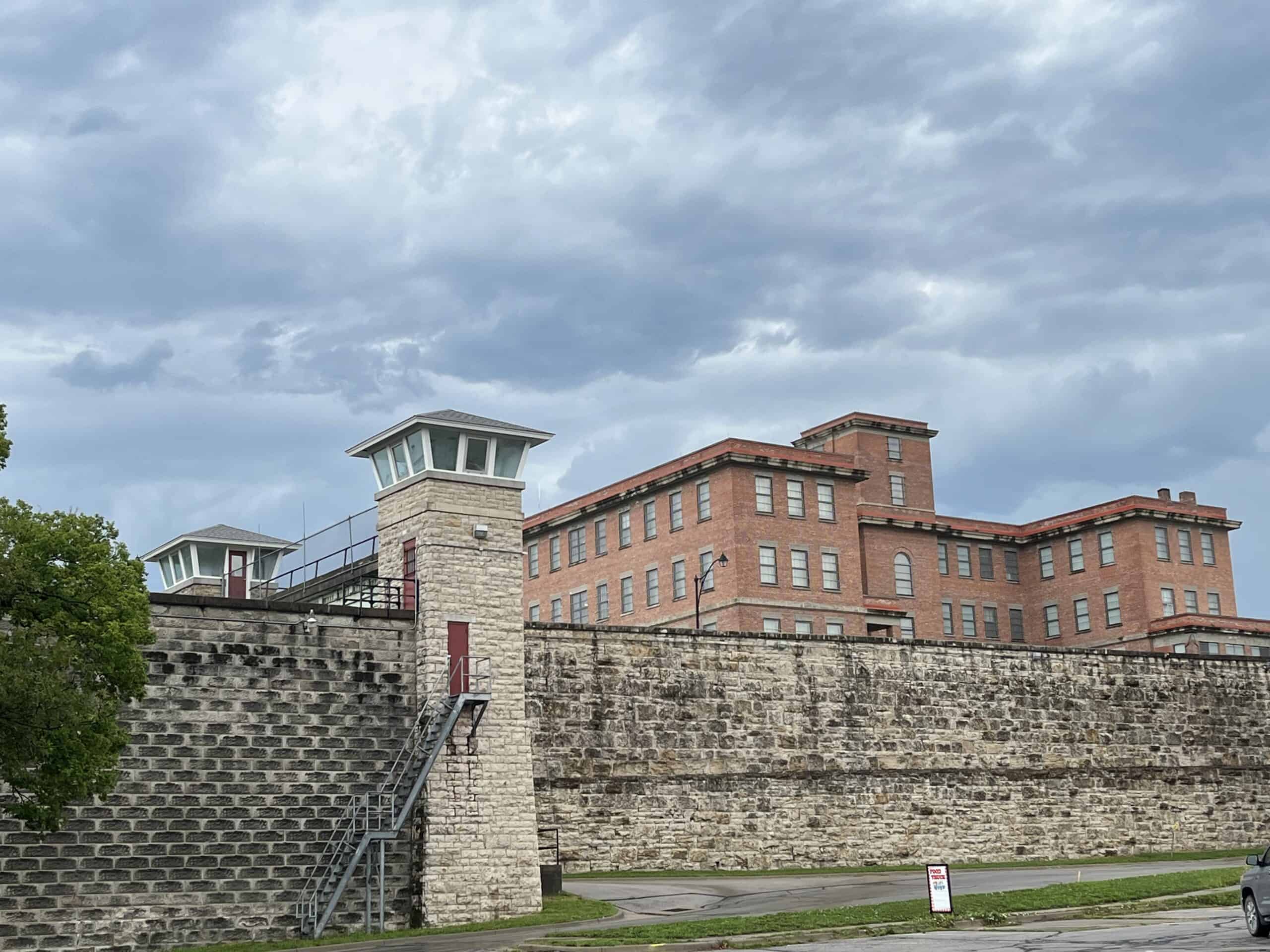Are you the type of person who can (enviably) enjoy the serenity of your habitat? Or, like me, do you have the maddeningly excess energy that drives you unendingly to roam and explore? I can’t stay home for more than a day or two before I am relentlessly compelled to rush out and see what is available to experience in this massive world. I have a son who is like this, but much more so than me. I have the domestic wanderthirst; he has the international propulsion to discover. So, when I received an email from Kristi Lee, at the Leavenworth Kansas Visitor Center, inviting me to come blog about their town, I couldn’t jump in the car fast enough. I am so grateful to Leavenworth for hosting me for three days, which produced a blog about their boutiques and a blog about their museums, along with this one.
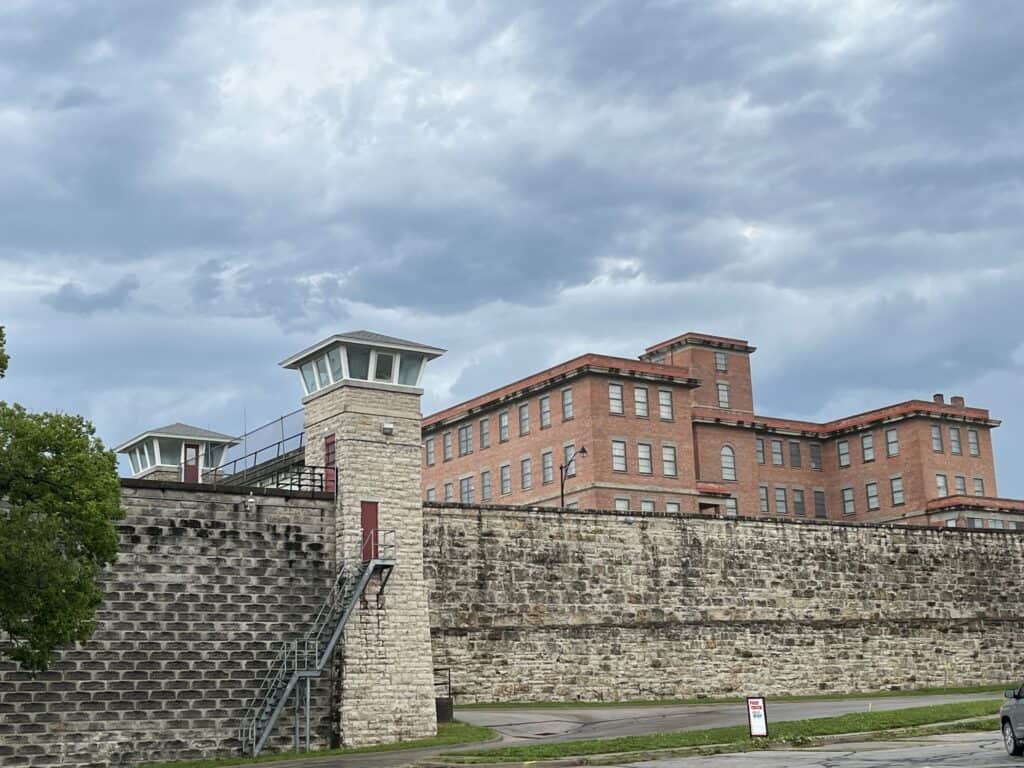
In order to get into the fort, you must first stop at the Fort Visitor Center and provide a Real ID. While I was there, a family was trying to gain entrance, but one member of their group did not have a Real ID. They were slowed down, trying to sort through that issue. So, check the Fort’s website for requirements for entrance.
I went first to the Fort Museum, which gave the story of its history. In the 1820’s, the wagon trains that were headed west needed protection, so the Army established Fort Leavenworth in 1827, and the Dragoons escorted the caravans through the region.
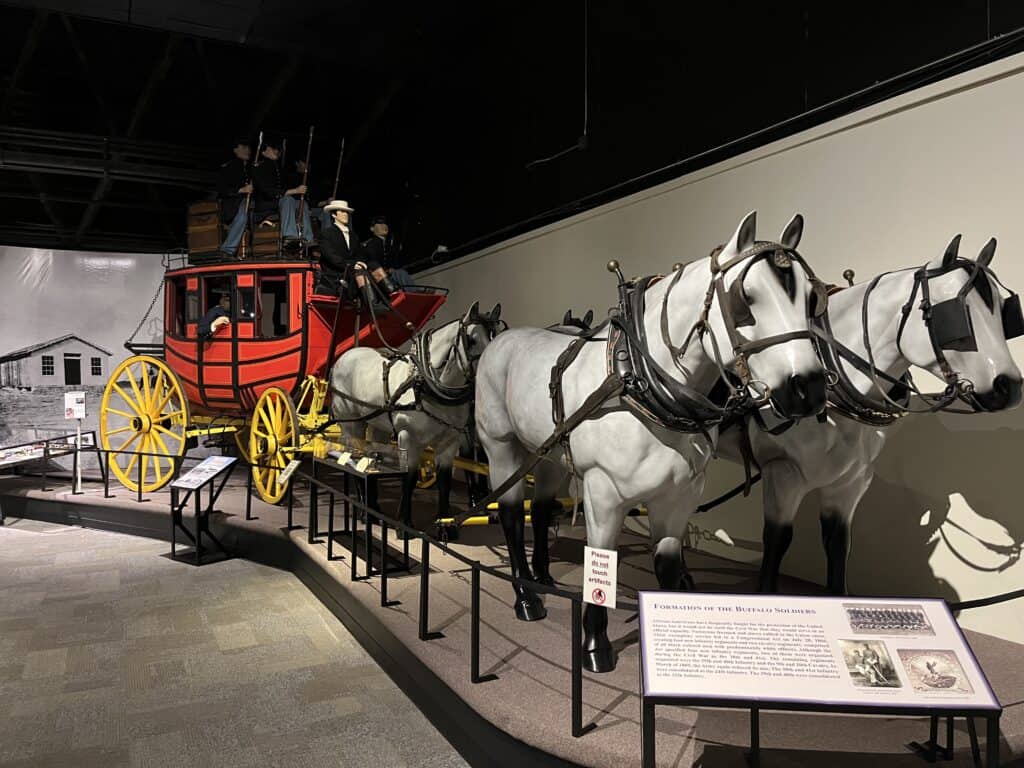
The Fort is still active and is the second oldest active U.S. Army Post! Today, it functions as an Army University.
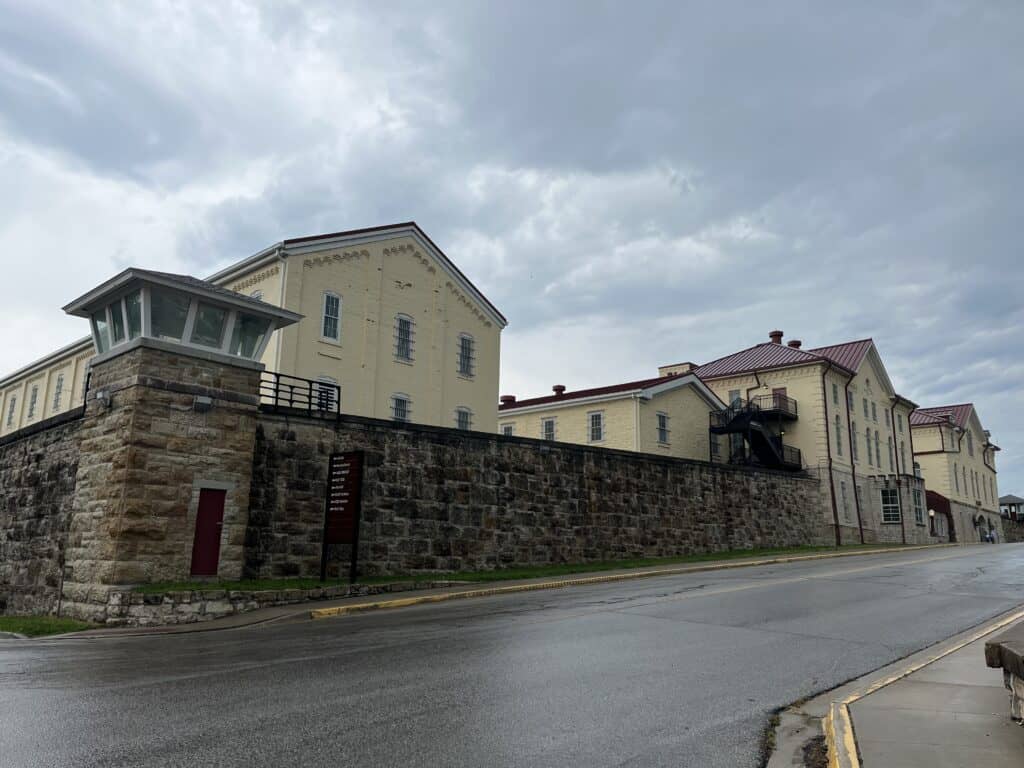
Every inch within the walls of this Fort emanates history.
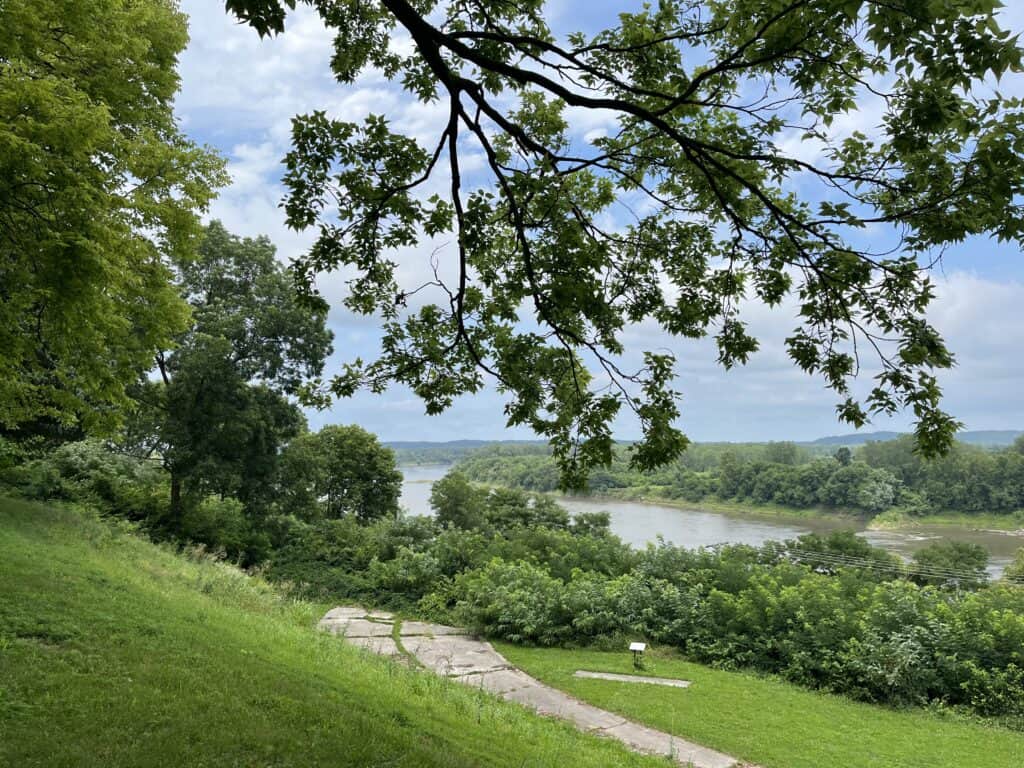
The Fort sits over the banks of the Mighty Mo, where the Lewis and Clark expedition sailed by. I can’t get enough of imagining all that happened here. I drove and walked all through the Fort. I had lunch inside what is nicknamed “the Castle”. Previously, it was the United States Military Prison. It was constructed in 1909. Two-thirds of the prisoners were incarcerated for the crime of desertion. And yet, there were far more horrific crimes, resulting in 97 exectutions. Punishment back then included flogging, carrying a ball and chain, and branding on the face with a hot iron. The prison name was later changed to the United States Disciplinary Barracks, to reflect the changing philosophy from punitive to corrective treatment.
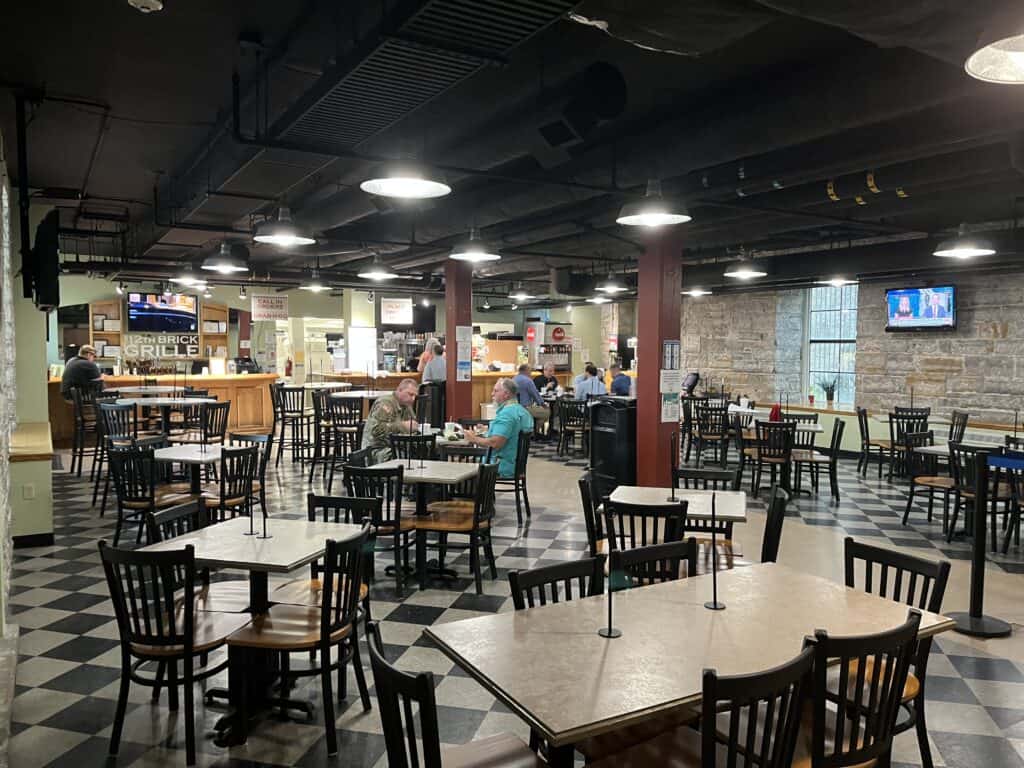
Inside the Castle, is the 12th Brick Grille, where I enjoyed a good lunch while interviewing several soldiers. A large portion of the Castle was torn down in 2004, and a modern facility built for the military inmates.
After lunch, I explored throughout the Fort, finding and purchasing a coveted book at their thrift shop, and perusing the enormous, modern library – The Ike Skelton Combined Arms Research Library. What a gold mine. I could have stayed there all day. They house so many fascinating books and documental archives. Check out their index!
As I drove the narrow roads, I happened upon a small cemetery on a lonely hill. I stopped and walked among the grave stones.
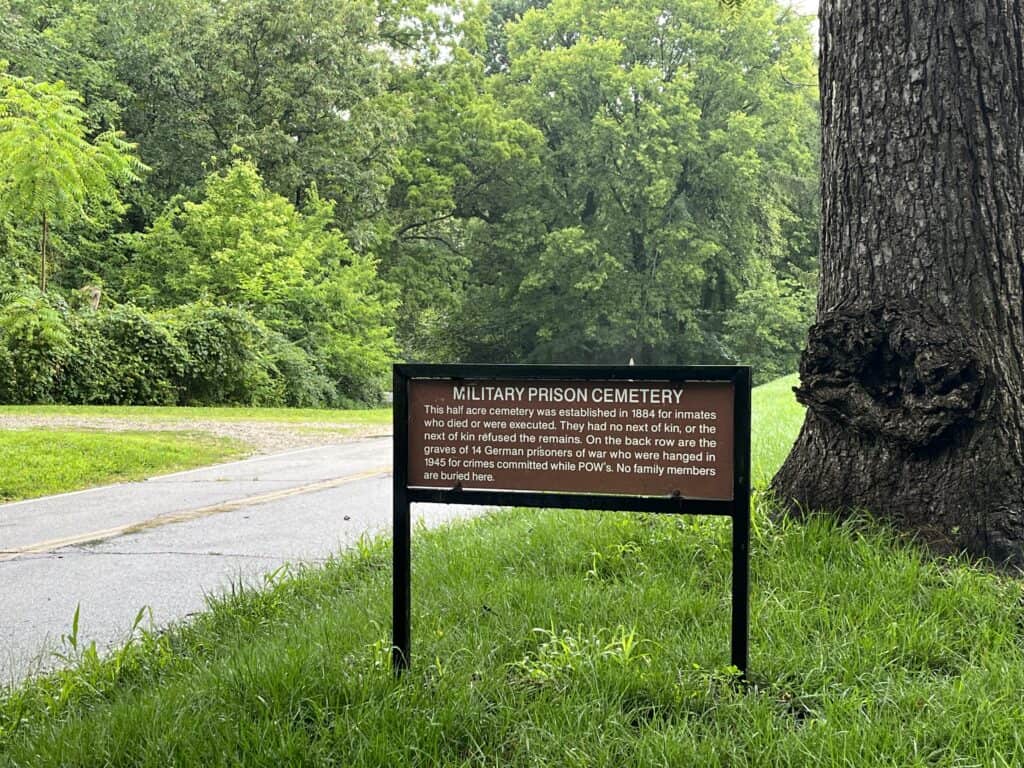
One sentence, on this sign, made my heart ache: “they had no next of kin, or the next of kin refused the remains”. Many were young people, from the 1800’s. There are 258 individuals buried here, including 14 German POWs. They were hung in a makeshift gallows in one of the prison towers. In a library book, I read the first-hand account of a newspaper journalist who witnessed the hangings. These young men had been corralled into the Nazi Youth Camps at age ten, and were programmed into robotic adherents to its dictates. Their last words were telling before falling to their deaths: with unemotional affect, one after another, these males, fresh out of their teens, voiced their resolute loyalty to Hitler. As I read the account of each boy, I felt the rush of tears for their stolen childhood and futures.
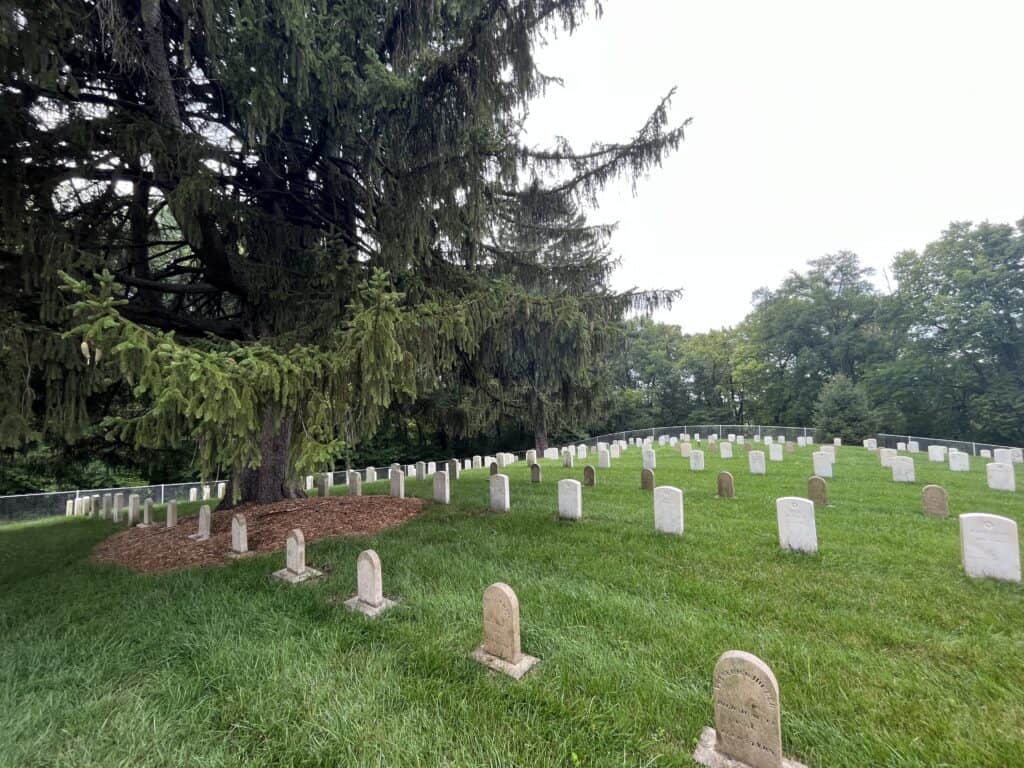
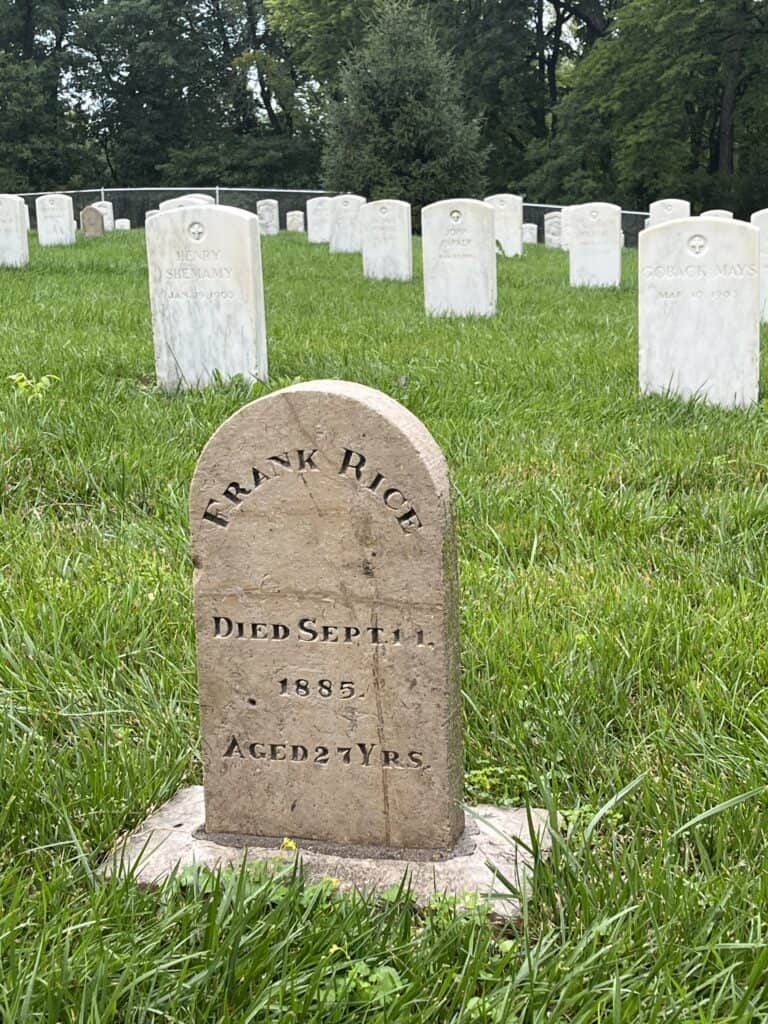
After I got home, I researched the grave names, and finally had to stop. It is too gut-wrenching. The Fort’s Prison Cemetery is on Find-a-Grave, some with photos of these young men, and their stories. Many are hard to read…
The Main cemetery for the soldiers is far larger. Fort Leavenworth National Cemetery is the resting place of 23,000 veterans since the War of 1812. I go there sometimes to walk slowly along the paths, and sit in its peaceful beauty. It is a place of inspirational bravery.
Fort Leavenworth has the spirit of previous eras naturally integrated with the present. Those are my favorite type of places. Our ancestors knew the secret of living harmoniously with the presence of the past. Go experience these rare places. History has such profound life insights to share with us.

